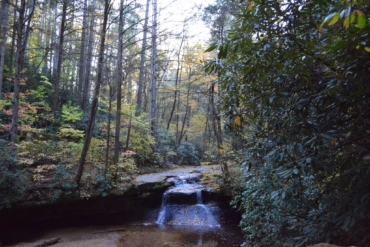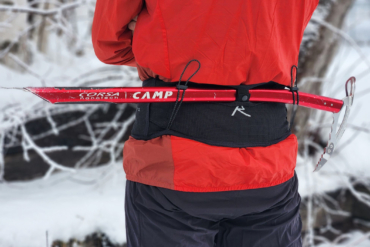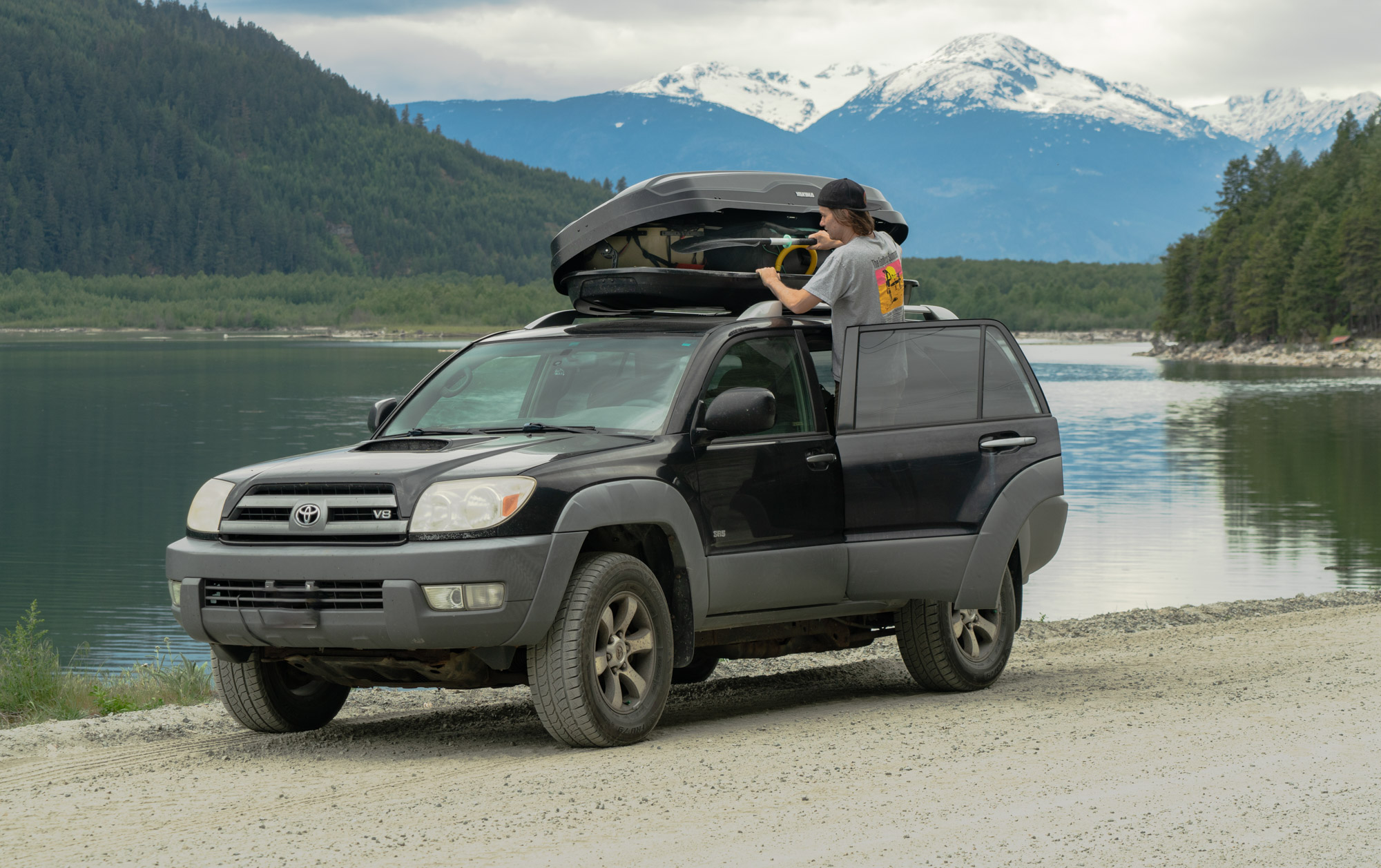Unsteady, vibrating skateboard wheels catapult forward foot-by-foot as a team of three 19-year-old Californian skate bums push along the road shoulder, wheels aimed for the Atlantic coast. They are doggedly pushing along the Santiam Scenic Byway in Oregon, surrounded by dark, tall Douglas firs and a constant stream of cars and semis that pass inches from their legs.
Packed to the gills with camping gear, a 1969 Firebird (their support vehicle) helps shuttle the skaters to and from impromptu rendezvous points. Jack Smith — one of these young skate bums — pushes on a tiny, proline skateboard with a translucent deck. Its first-generation urethane wheels are top-class for 1976, but tiny and insufficient for a cross-country journey. Smith’s feet can barely fit on his skate deck because it is so small.
Their route would take them from Lebanon, Ore., up through the Northern U.S. to Williamsburg, Va. The whole plan was haphazard, with a rough route scouted out to hopefully avoid the heat of the American Southwest.
Each skater, three in total, would earn $500 from a skate company (Roller Sports, Inc.) if they successfully made it across the country. Adjusted for inflation, that’d be over 2 grand today. The group would skate from Oregon to Virginia and cross through 11 states, taking 32 days to complete the journey.

“We had no idea what we were doing. We really didn’t have a clue to how many miles we could cover a day because we didn’t train for the thing at all. You know, we were 19 and full of ourselves and thought, ‘Let’s just go do this,’” said Smith.
A Lifetime of Skate Trips

Jack Smith, now 66 years old, has a soft, welcoming voice. He uses phrases like “knuckleheads” and speaks slowly and thoughtfully, just like you’d expect from a man who has lived his whole life on the California coast.
Smith has skateboarded coast to coast across the United States five times, yet there’s no bravado in his storytelling. For such a feat, someone would definitely have the space to brag, but Smith refrains. Sure, he likes to reminisce, but he is reserved in his storytelling. You have to push him for details.
In the 1970s in California, the skate scene was evolving and hot. Technology was advancing from clay wheels to urethane and Smith was kicking concrete day in and day out in Morro Bay, competing in skate slalom competitions (where skaters race and weave through cones) and dreaming up new ways to spend his time on a skate deck.
The Inaugural 1976 Cross-Country Skate

Then came the 1976 trip, which would herald in a lifetime of skate crossings for Smith, pushing from the Pacific to cities on the East Coast. The routes over time would vary slightly, one time ending in New York; another time the team dipped down through Iowa. Always, the trip was dictated by unforeseen road conditions, closures, or construction. “You become a connoisseur of shoulders and road surface,” said Smith.
Most folks would call it quits after one cross-country trip on a skateboard. But for Smith, the journey continues to strike a nerve. “The thing I tell everybody is if you do this trip, it will change your life,” said Smith. Nothing about these attempts is easy, and in 1976 the team was woefully unprepared. “It was much harder than any of us expected,” says Smith.

Leaving Lebanon, Ore., on the first day of the ‘76 trip, the team would take on Santiam Pass, a 4,816-foot mountain pass in the Cascade Range. As the team pushed upward for miles, they had to teach themselves to push with both legs to avoid cramps and severe fatigue. Their feet would rattle and go numb, or hours would be spent descending a steep grade weaving back and forth across a lane.

From Oregon, the team would push through the boonies of Idaho and through small towns and cattle fields in the mountain states. The Midwest would bring more expanses of unfamiliar farmland that then opened up to the tough, relentless rolling hills of West Virginia. The team would finish to small flurry of press and meager stacks of cash, driving the Firebird on a winding trip back across the country to California once again.
Jack Smith: The Founding Father of Long-Distance Skateboarding

Back in Morro Bay, years rolled by as Smith worked in the skate and sports world. But the journey of skating across the USA would soon return, this time as a tool to raise money for charity. In 1984, Smith would head out with a new team, completing the crossing in 26 days to raise money for the Multiple Sclerosis Society.
Nineteen years later, Smith completed another cross-country trip, this time raising money for Lowe Syndrome (which Smith’s son passed away from in 2003).

With each new attempt, new technology, skate-related or otherwise, would improve conditions and route finding. In 2003 especially, longboards with drop decks built specifically for long-distance pushing had hit the scene. The team didn’t train, but still cut their time down to 21 days.
Another 10 years went by until Smith gathered a team together to raise money for Alzheimer’s research. The team of five, including two women, completed the attempt in 23 days. Smith was 56 and the oldest person to complete a cross-country trip on a skateboard at the time.

In a journal entry from the trip, Smith reflects on their progress: “The team is getting stronger every day. What we are doing is so foreign to 99% of the skateboarding world. It’s hard to explain the stoke in pushing up miles of 6% grade, on rough road in 100+ degree heat. But the stoke is definitely there.”

On that 2013 trip, Smith would injure himself, hitting a crack in the road and fracturing his elbow. “I was still able to finish skating, but the last few days were pretty painful,” said Smith.

Flash forward only 3 years and Smith would be skating again for his last trip, this time on an electric skateboard. Which unbelievably, is an artifact you can find at the National Museum of American History in Washington, D.C. While Smith wasn’t pushing, the attempt was still physically and mentally draining. It was just him, the board, and cars whizzing by too close for comfort.
“Just standing on a board your legs cramp,” said Smith. “I would actually get off the board every 2 to 3 miles and walk around because I knew if I had to bail my feet weren’t gonna work and I would have a bad crash.”
Smith stopped in Mountain Home, Idaho, after several close calls with the grills of semi trucks. Two years later, in 2018, he would return to Idaho to complete the journey. The trip from Idaho took 45 days and covered 2,394 miles.
On the Road

In 1976, the heat was horrendous and money was tight. The team wasn’t trying to set a speed record, all they wanted to do was make it to the Atlantic Coast. So, days often included detours. “When you’re pushing a skateboard across America, you’re in that same environment for 3 or 4 days,” said Smith. “It’s up close and personal.”
Questions were abundant and generosity was frequent. One night, the skaters stayed at a “hippie man’s” property, slinking into his pond to clean their grimy bodies.
Sometimes their fame would precede them. Arriving in Hopkins, Minn., on the outskirts of Minneapolis, a marquee with big letters spelled out their arrival: Welcome Skateboarders.

Still, years later the allure of cross-country skating has really only captured a very niche audience. But, Smith has become an integral figurehead in the long-distance skate movement.
For one, Smith’s skateboard attempts have begun to formalize a routine for crossing the U.S. by skate deck. In all of the group attempts, Smith and the rest of the team would use a leapfrog relay method. One skater starts, a support vehicle drives several miles ahead and another skater starts from the van, skating onward until the van picks up the skater behind and meets them to switch out.

Most recently, a team of four, some of the world’s top long-distance skateboarders, set the record for the fastest crossing of the U.S. by skateboard using the leapfrog method while following the trend Smith started — raising money for the Invisible Disabilities Association.
The team completed the journey in 17 days and 6 hours and is in the process of formalizing FKT guidelines for the route. Smith drove the support vehicle. “I could have never imagined in 1976 that almost 50 years later I would be driving a support vehicle for a team attempting to break [my] record,” said Smith.
What’s Changed Since 1976

“In the early days, there was no specialized equipment. I mean, that first trip, I can’t even remember what kind of shoes we wore. In ‘84 we actually sent a letter to Nike and they sent us three pairs of shoes,” said Smith. “We used to joke that we never used the Nikes when we went downhill. Cause we didn’t wanna burn ’em up.”

Now, skaters have boards and even paddleboard-style poles designed for pushing. Technical running and cycling gear has helped immensely too, with skaters often wearing running tights and running shoes for their attempts.
“The actual skating equipment is lightyears beyond what was used in the early days. We adapted regular skateboarding equipment back in those days to fit our needs. Whereas now you can buy off the shelf long-distance skating gear,” said Smith.
The community has grown as well. “In ‘76, there was no cross-country skate community,” said Smith. “If there was, there were three guys that were in it.”
Now, there is a small but mighty group of long-distance skateboarders who compete in competitions around the world, including a 24-hour ultra-skate at the Miami Speedway. Others, like Paul Kent, specialize in “wild,” off-the-beaten-path attempts, with gnarly downhill descents and pushes through gravel.
“It was kind of bittersweet,” Smith tells us while driving the support vehicle. “I’m realizing that I probably won’t be doing any more long distance pushes myself. I’m 66 now. I still skate, but I think my really long distance days are in the rear view mirror.”

Even with his long-distance days behind him, when Smith talks, this lifetime skateboarder pulls you back to 1976. Feet to pavement — push, push, glide — a lulling pattern of road-shoulder survival. With maps stuffed in the glove box and the radio blasting in the boxy Pontiac, there is only a simple task at hand: stay alive, and get to the other coast.









